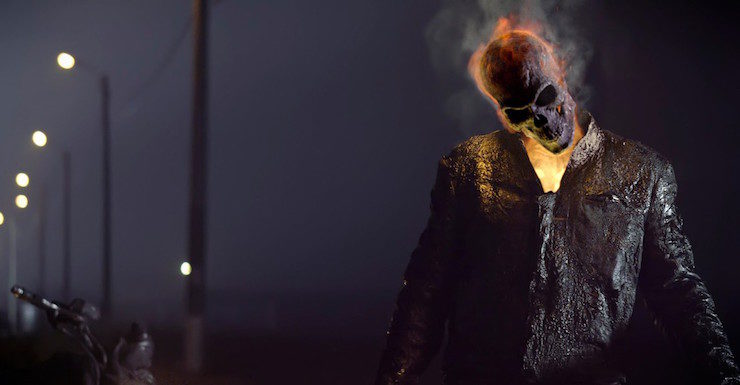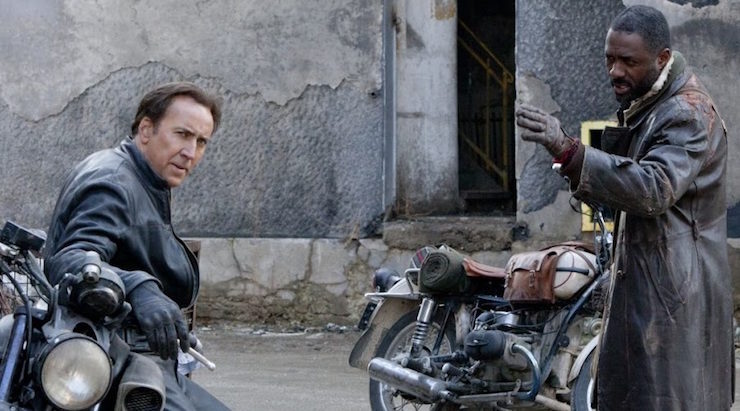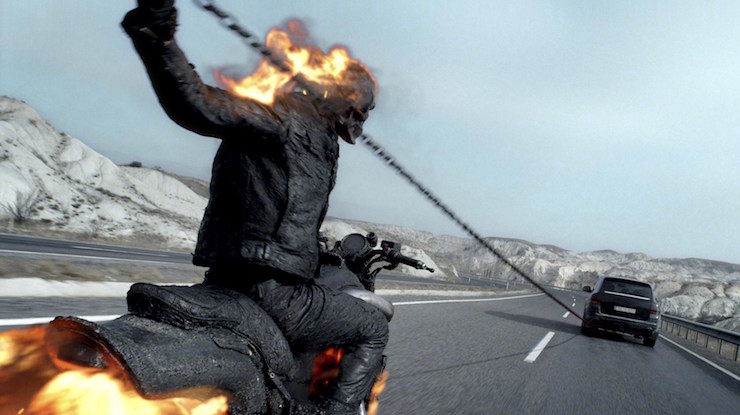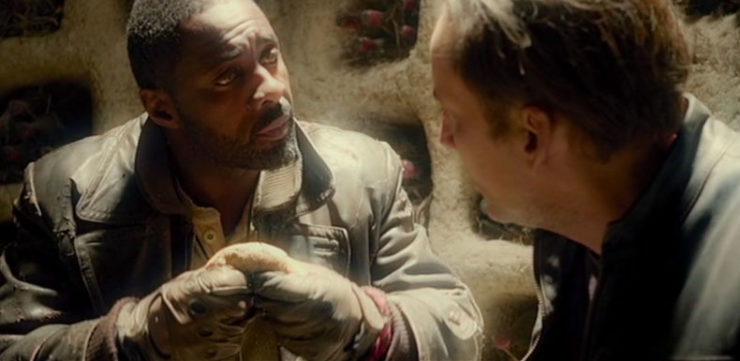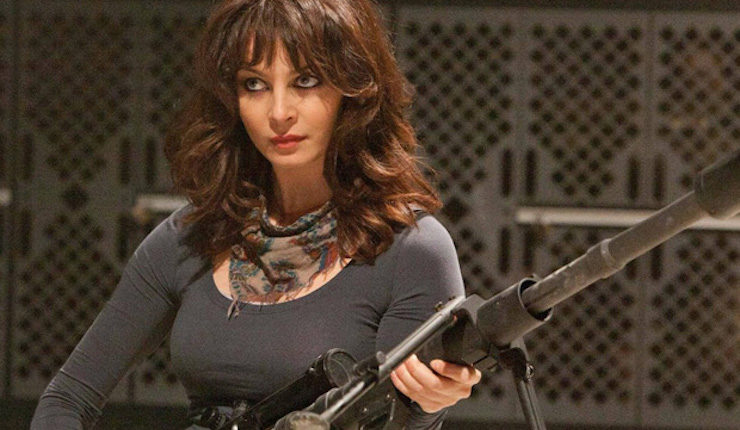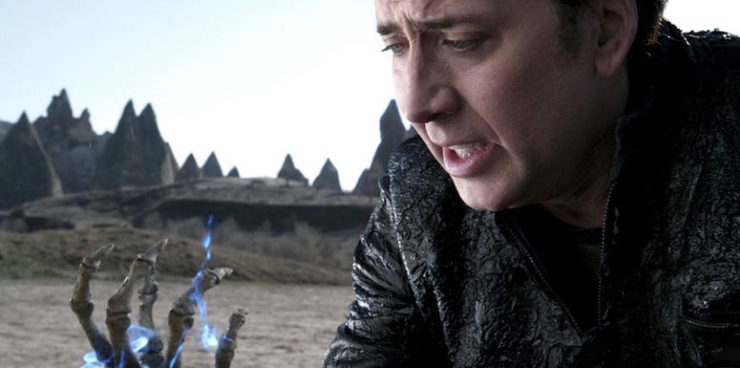While Ghost Rider wasn’t exactly a huge critical hit, it did well at the box office, and a sequel was green-lit right away, with Nicolas Cage signed up to return as the title character. However, he was the only one to return. Nobody else from the 2007 film came back for the 2012 sequel, not even the actors whose characters are retained, as Ciarán Hinds replaced Peter Fonda as the devil, while Ionut Cristian Lefter played the younger Blaze instead of Matt Long.
In 1998, Marvel Comics, having already succeeded in outsourcing their flagship non-mutant titles (those related to the Avengers and Fantastic Four) to Image Comics founders Jim Lee and Rob Liefeld with the “Heroes Reborn” event in 1996, did likewise for Daredevil, Black Panther, The Inhumans, and The Punisher with Event Comics, a studio run by Joe Quesada and Jimmy Palmiotti. The imprint, called Marvel Knights, was used try to goose sales on those low-profile characters and bring in some creators from outside the mainstream—David W. Mack, Kevin Smith, Brian Michael Bendis, Garth Ennis, Michael Avon Oeming—to work on these characters.
Buy the Book
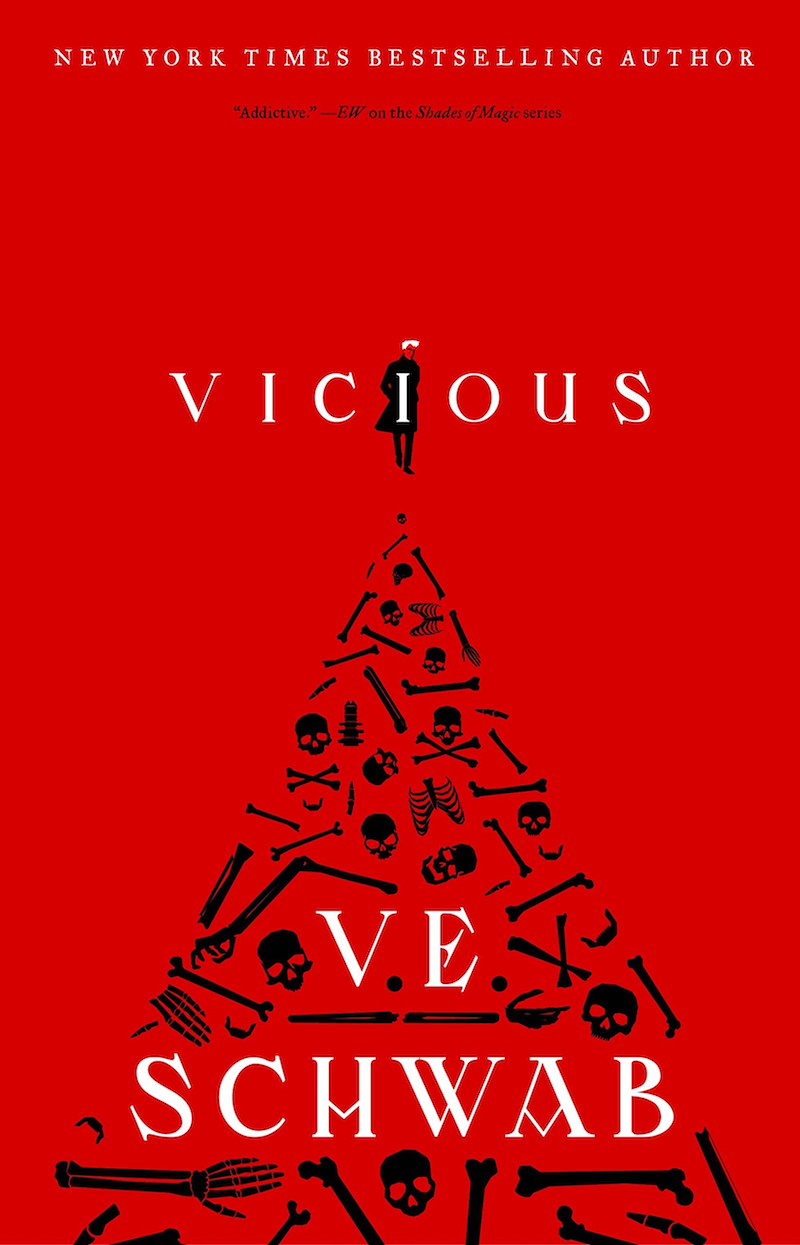

Vicious
It succeeded beyond everyone’s wildest dreams, as Quesada wound up becoming editor-in-chief of Marvel in 2000, a position he would retain for more than a decade before retiring and becoming chief creative officer. It also led to many Knights creators—particularly Bendis, Ennis, and Oeming—having lengthy and influential careers writing Marvel characters.
With Marvel Studios growing and becoming its own thing, the film division decided to make use of the Marvel Knights imprint to do some of Marvel’s darker properties. Leaving Iron Man and the Hulk and Thor and Captain America to Marvel Studios, it was left to the Marvel Knights corner to develop Punisher: War Zone and Ghost Rider: Spirit of Vengeance.
Those wound up being the only two films released under the Knights banner. While Marvel Studios more or less turned the superhero film genre into a license to print money, Marvel Knights was less of a success with audiences, and was abandoned following Spirit of Vengeance.
The movie, at the very least, had a strong thespic pedigree, as it were. Idris Elba, fresh off his brilliant turn as Heimdall in 2011’s Thor, plays Moreau; Christopher Lambert, the Highlander his own self, and Anthony Stewart Head, late of Buffy the Vampire Slayer as Giles, both play monks; and Hinds, who will always be Julius Caesar to me from HBO’s Rome, and who will go on to play Steppenwolf in Justice League, as the devil.
“You’re very weird, Mister”
Ghost Rider: Spirit of Vengeance
Written by David S. Goyer and Scott M. Gimple & Seth Hoffman
Directed by Neveldine/Taylor
Produced by Avi Arad and Steven Paul and Michael De Luca and Ashok Amritraj
Original release date: February 17, 2012
Johnny Blaze provides a voiceover explaining who he is, a summary of events that only bears a passing resemblance to the events of Ghost Rider. (For starters, the signing of the contract with the devil—who is now named Roarke because, I guess, the screenwriters had nightmares about Fantasy Island when they were kids—is completely different. Instead of Blaze pricking his finger on the scroll on which the contract was written and that blood being used to sign it, the contract is now a computer printout with “SIGN IT” tabs, and he cut his hand on a broken bottle and used that blood. Blaze now has a scar on that hand, still, which he looks at meaningfully throughout the film to help us believe that that’s how it happened in the previous film, no really.)
We then cut to Moreau, a drunken priest who has yellow eyes for no reason the script bothers to explain (maybe Idris Elba liked wearing them so much in Thor he decided to keep them for his next Marvel role; EDITED TO ADD: no “maybe” about it, that was Elba’s intent, as stated in this 2012 interview). He arrives on a motorcycle at a high-tech monastery in Eastern Europe that has granted asylum to a boy named Danny and his mother Nadya. Danny is part of a prophecy involving Roarke. Benedict, the head of the monastery, assures Moreau that Danny is safe, and in a few days the prophecy’s time will pass, and he’ll be a normal boy. Moreau thinks he’s unsafe here.
Moreau is proven right half a second later when a mercenary named Carrigan shows up and kills the monks. Nadya and Danny get away in a car, aided by Moreau, though Nadya thanks him by shooting him, too—he goes ass over teakettle into a tree.
Moreau thinks the Rider is the only one who can safeguard Danny, and he tracks down Blaze, who is hiding out in an abandoned warehouse, on the other side of the world from his Texas home, trying to keep Ghost Rider under wraps.
In exchange for finding Danny and bringing him to the sanctuary, Moreau promises to free Blaze of his curse. The prophecy Danny is being protected from is that he will be the devil’s new vessel on Earth—he is the product of the devil’s union with Nadya, a deal Nadya made when she was dying in exchange for staying alive.
Blaze agrees, and he changes into Ghost Rider and tracks down Danny at the same time that Carrigan catches up to him and Nadya. Ghost Rider arrives just as Carrigan is about to shoot Nadya (who, by the way, is his ex). Ghost Rider kills two of Carrigan’s soldiers-for-hire, but Carrigan himself manages to get away with Danny after he hits the Ghost Rider with an RPG.
Cut to Blaze waking up in a hospital. How he got there is left as an exercise for the viewer. He has scars indicating old bullet wounds, but that’s where Ghost Rider got shot when he faced Carrigan. Blaze leaves the hospital before the cops can question him and tracks down Nadya, who pulls a gun on him.
Somehow, Blaze convinces her that he’s trying to help Danny. Unfortunately, Blaze can no longer sense Danny. Carrigan called Roarke in an attempt to raise the price, which Roarke refused. (“Changing the defined terms of an agreement is something we just don’t do.”) Carrigan is ripshit over two of his guys getting flambéd by Ghost Rider, but Roarke is insistent. Roarke is the one who has blocked Danny from Ghost Rider’s ability to seek him out.
At one point, Danny manages to crash the car they’re taking him in and he runs away. Carrigan, who was livid after Ghost Rider killed two of his people, contemptuously leaves another one of his employees behind in the car when it blows up. Okay, then. Danny breaks his ankle while escaping, and Carrigan catches up to him, stealing a van from a stoner couple out camping.
Nadya and Blaze steal the tow truck that brought Blaze’s motorcycle to the hospital and head to an arms dealer Carrigan works with. Blaze is barely holding Ghost Rider back, and the flashes of skull his face briefly turns into combined with Blaze being completely batshit convinces the arms dealer to give up Carrigan’s location. Blaze hops on his cycle and heads off, no longer able to hold the transformation back. Nadya follows in the tow truck.
Carrigan is purchasing heat-seeking missiles in the mistaken belief that they’ll be more effective than the RPGs. Ghost Rider arrives in the midst of the transaction and proves Carrigan wrong, as the missiles are wholly ineffective. At one point, Ghost Rider turns a mining machine into his flaming conveyance and kills tons of people with it.
After mortally wounding Carrigan and killing the others, Ghost Rider goes after Nadya—she has a criminal past, after all, and that makes her guilty in the demon’s eyes—but Danny is able to reverse the transformation. He also heals his own broken ankle.
The three of them hit the road. Blaze gets in touch with Moreau, who agrees to meet them on the road and escort them to a remote monastery, much less high-tech than Benedict’s, but much safer, Moreau believes. En route, Blaze and Danny bond, with Blaze taking Danny on his motorcycle and showing off some of his stunt bike moves. Nadya smiles while she watches, surprisingly unconcerned about her son riding on a motorcycle doing stunts on an open road with no safety equipment.
They arrive at the monastery, where all the monks are barefoot and covered in tattoos, since apparently neither the monks nor the filmmakers are familiar with Leviticus 19.28. Moreau takes Blaze into the bowels of the monastery, which is filled with wine. (Moreau shows off a bottle that is allegedly 2000 years old that he is saving for a special occasion.) Moreau explains that the Ghost Rider is a fallen angel, Zarathos, formerly the spirit of justice, who was corrupted by Roarke into the spirit of vengeance.
In order to be free of Zarathos, Blaze must confess a sin he has never admitted to, and Blaze says that he didn’t do the deal with Roarke for his father, he did it for himself. The elder Blaze was at peace with his impending death, but young Johnny didn’t want his Daddy to die.
Shortly after Blaze is exorcised, the head of the monastery, Methodius, condemns Danny to death, to the outrage of Moreau and Nadya and Blaze. Methodius feels the risk is too great. However, Roarke has an ace in the hole: he rescued Carrigan from death and turned him into Blackout, a creature who decays everything he touches. Blackout shows up at the monastery before Methodius can kill Danny and kills all the monks with but a touch. He takes Danny and heads to Turkey to meet up with Roarke. (How Blackout was able to kidnap Danny when he couldn’t touch him without killing him is left as an exercise for the viewer.)
Even though he no longer has the power of Ghost Rider, Blaze is still willing to go after Blackout to save Danny. He, Moreau, and Nadya raid the monastery’s surprisingly robust armory and they head to Turkey.
They arrive to see that Roarke has gathered a mess of the 1% from around the world for the ritual, which will make his power on Earth as great as it is in hell. Our heroes show up in mid-ritual, Nadya taking out the sentries with a sniper rifle, Moreau going in shooting (after opening the 2000-year-old wine and sharing a slug with Blaze—Blaze says it would be great on a salad), and Blaze rescuing Danny. Enough of the ritual was done so that Danny now has the same powers as Roarke, and so he restores Ghost Rider, who is able to literally send Roarke down to hell. Moreau dies at Blackout’s hands, but Ghost Rider is able to kill him, too, during a tiresomely long car chase.
Blaze is able to summon forth the angelic side of Zarathos and cure Danny of the taint of evil, and in the end, he rides off as Ghost Rider, only with the blue flames of heaven instead of the black smoke of hell.
“So—that happened”
I loved the bit in the movie when Blackout is in his stolen ambulance and rummages through the EMT’s lunchbox. He pulls out a sandwich, which decays to nothing instantly. He grabs an apple, same thing. But then he pulls out a Twinkie and nothing happens, so he eats it. I’m telling you, Twinkies will outlast the heat death of the universe.
I was also relieved to learn that the two-millennia-old wine wasn’t actually any good, proving that the writers weren’t complete idiots. Wine doesn’t last that long—certainly the bottle and cork wouldn’t—and there’s no way wine that old would be remotely drinkable. Hell, most of it would have evaporated…
And the reason why I’m talking about junk food and booze is because it beats talking about this monstrosity of a movie.
Back in 1998, there was a subplot in an episode of Sports Night when the main characters were chastised by the legal department because one of them sang “Happy Birthday” on the air without getting permission from or paying royalties to the two songwriters. When informed of this, Isaac Jaffe, played by the late great Robert Guillaume, exclaimed, “It took two people to write that song?”
When I got to the end of the movie and the director credit indicated that it was actually directed by a pair of people—Brian Taylor and Mark Neveldine—my first thought was, “It took two people to direct this film?” Because holy crap, is this a total mess. (Interestingly enough, the pair would never collaborate again after this, seemingly ending a five-year partnership as writers and directors.) The camerawork is horrible, the action scenes languid. There are two scenes of people riding motorcycles, Moreau at the top of the film and Blaze and Danny when they’re en route to the monastery, and they’re both incredibly boring, which is the opposite of what your motorcycle-riding scenes in a Ghost Rider movie should be.
Last week, I talked about how there are three different types of Nicolas Cage performances, which basically boil down to good, bad, and ugly. This falls into the ugly category like whoa, as Cage barely seems to even be in the same space-time continuum as anyone else in the movie, and he’s turned his batshit-o-meter up to eleven. He has no chemistry with any of the characters. Cage and Idris Elba seem to be acting in two completely different movies. Violante Placido and Fergus Riordan are great together as the mother-and-son pair of Nadya and Danny (there’s a great bit where they play a rich dude and wind up with his wallet and wedding ring), but both go horribly limp when placed next to Cage.
Cage is by far the worst performance, but he’s not the only bad one. Johnny Whitworth is as smarmy and boring as Carrigan/Blackout as Wes Bentley was as Blackheart in the first film. Ciarán Hinds has more screen time than Peter Fonda did in the same role in the previous movie, but he’s phoning it in about as much. As for Christopher Lambert, I’m still waiting for someone to show me a role that explains what all the fuss is about, because all I’ve ever seen with him (going all the way back to the overrated Highlander in 1986) is a simply dreadful actor who whispers all his dialogue and has all the emotional range of a dead rat. (Also, seriously, who came up with his gang of tattooed monks? There is no circumstance, none, under which a monk of a devout Christian order would have even one tattoo, much less be covered head to toe in them.) They’d have been better off switching roles and having the infinitely superior Anthony Stewart Head play Methodius, as Head is a superior actor in every possible sense to Lambert, and would have done much better with the character’s heel turn.
Thank goodness Elba’s in this, because he’s the only person who makes the movie in any way watchable. He’s obviously having a blast playing the freewheeling drunkard, which is good, because nobody else is having fun in this movie. But he also imbues Moreau with all kinds of passion, not just for wine and fighting, but also for his cause. The moment when he chastises Blaze and Nadya, reminding them that they were the ones who made deals with the devil, is one of the few dramatic moments that actually lands in the movie. Everyone else here is either intense (Head, Placido) or smarmy (Hinds, Whitworth) or incredibly boring (Riordan, Lambert) or looking like they’re having a fit (Cage).
On top of all that, the CGI is actually much worse. Ghost Rider looks more like a skeleton on fire than an actual moving creature, and Zarathos spends most of his time standing around opening and closing his mouth, and it’s just an utter failure. It’s too bad, because in the abstract the darker look—more smoke, the bones of the skeleton being charred, the leathers being soot-covered—works very nicely, but the execution is just a disaster.
Between this and Punisher: War Zone both crashing and burning, the notion of a Marvel Knights sub-studio was quietly put to bed. Cage made it clear he had no interest in a third GR movie, and neither did anyone else after seeing this train wreck. Having already gotten the Carter Slade and Johnny Blaze versions on film, not to mention a tribute to the Danny Ketch version in this film (since I can’t imagine the boy wasn’t named “Danny” on purpose), the Robbie Reyes version appeared in the fourth season of Marvel’s Agents of S.H.I.E.L.D.
Next up, we’ll look at a pair of Alan Moore adaptations that don’t have Moore’s name on them, but definitely retain his influence, starting next week with V for Vendetta.
Keith R.A. DeCandido is working on a ridiculous number of projects all at once. Feel free to distract him from them on his blog or on Twitter @KRADeC or on his fan page on Facebook or in the comments here.










